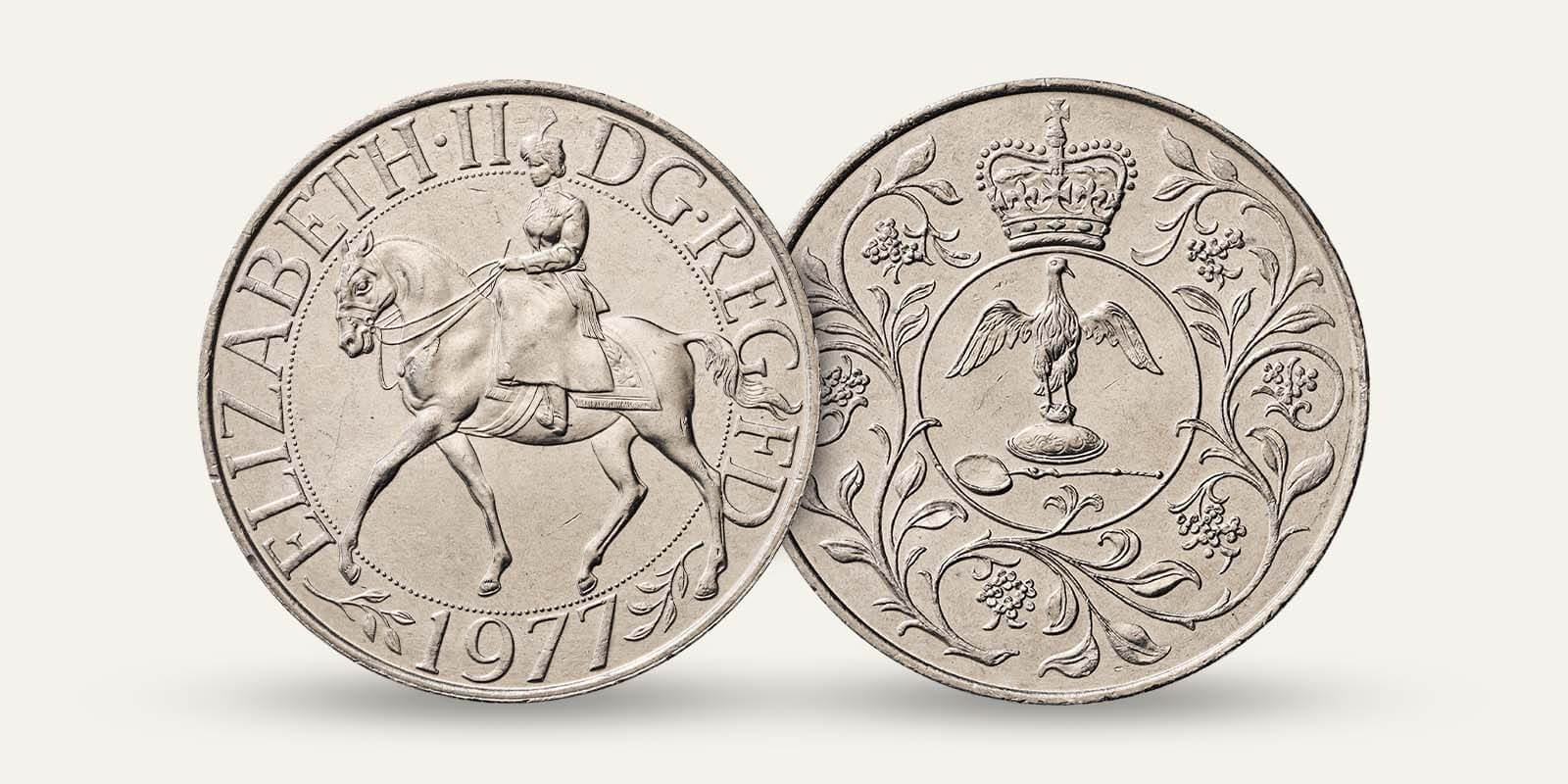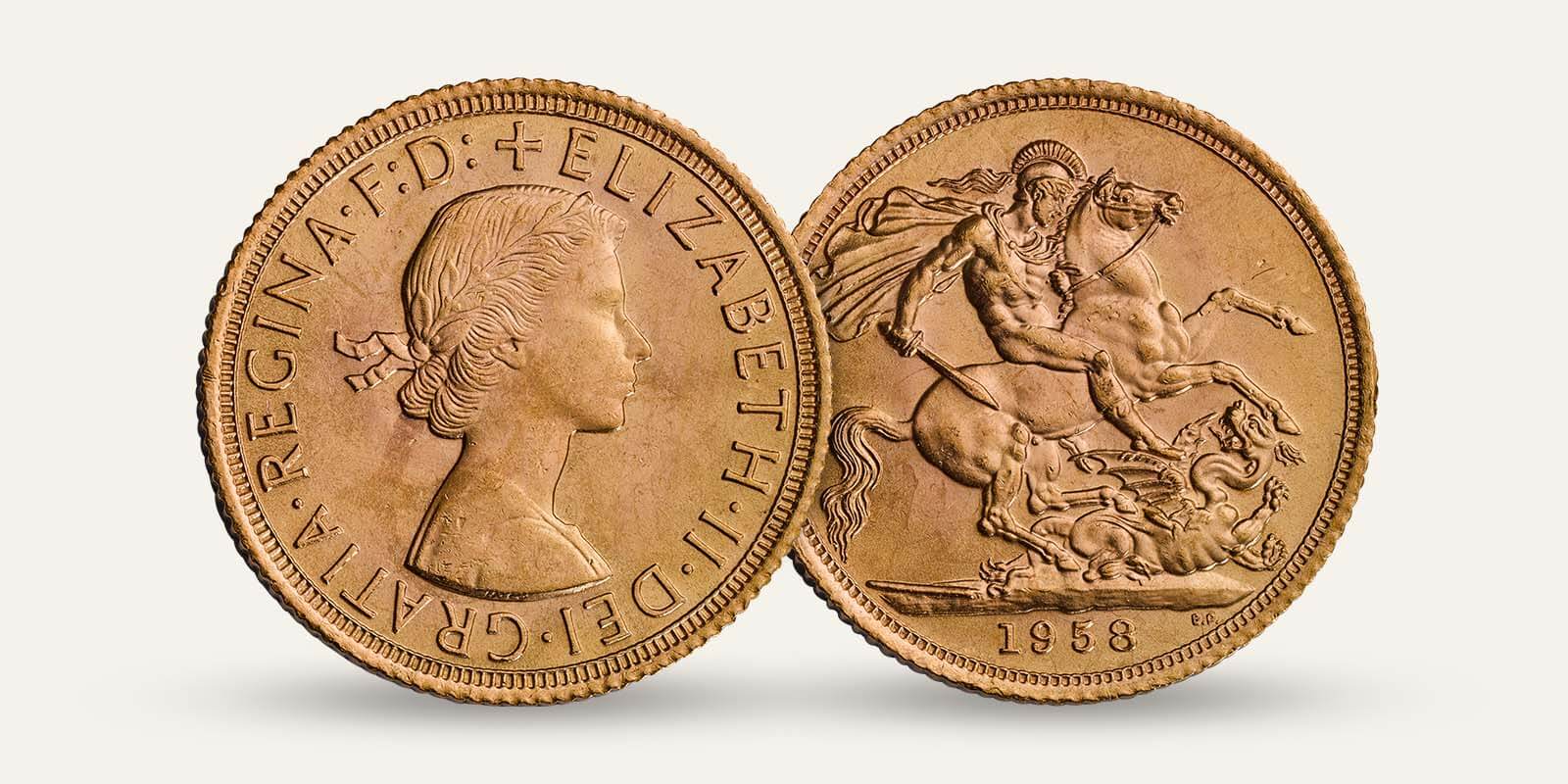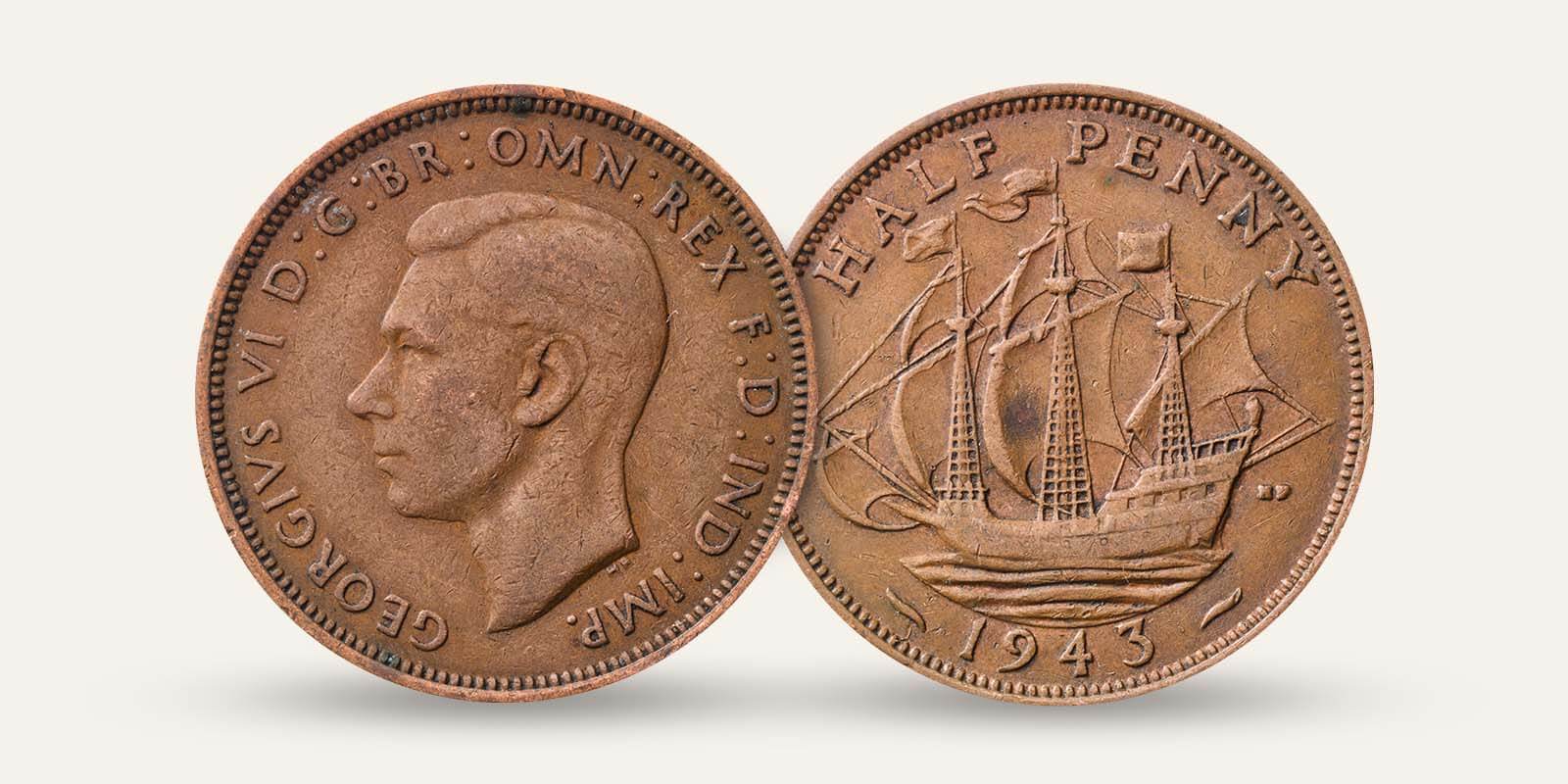
50p Coins
The humble 50p was introduced in 1969 to replace the ten-shilling note in preparation for the United Kingdom’s adoption of decimal currency. It was the world’s first seven-sided coin and demonstrated to the public the size of the coinage revolution taking place.
Since its introduction, the 50p coin has seen many designs and themed collections. In 1997, it was also resized to maintain its weight-to-value ratio. The coin’s unique size and shape offers artists more space and interesting angles to create fabulous designs, of which there have been plenty.
The 50p has featured some of the most popular editions and collections The Royal Mint has ever produced. These include the famous London 2012 Olympics series, Peter Rabbit collection, and the Diversity Built Britain 50p coin. This vast selection of designs on a low-denomination coin has made the 50p popular with serious collectors and the public alike.

Crowns
British crowns were introduced when they replaced the English crown with the Act of Union which led to the creation of the UK. Weighing one ounce, the crown was a large, heavy coin that was not always popular with traders. Its use declined through the nineteenth century and, following the UK’s switch to the decimal system, it was primarily struck for commemorative purposes.
The crown was worth 25p (five shillings prior to decimalisation), but the face value was increased in 1990 to the £5 crown we know today. This was to ensure the coin’s value was consistent with its size and weight.
Whether you are interested in historic coins or want to collect modern commemorative editions, there are spectacular crowns you can add to your collection. Sought-after historic crowns include the beautiful 1847 Gothic crown, Victoria Jubilee Head crown and 1953 coronation crown that marked the beginning of Her Majesty The Queen’s reign. In more modern times, the £5 crown has been used to honour royal weddings, jubilees and memorials. These coins are hugely popular with collectors, particularly those interested in royalty.

The Sovereign
As The Royal Mint’s flagship coin, The Sovereign plays an important part in our history, and it’s one we are proud of. The first Sovereign was struck in 1489 in response to Henry VII’s demand for a ‘new money of gold’ and was produced as a show of each monarch’s strength until 1604. The Sovereign was not seen again for over 200 years until the Great Recoinage of 1816 was enacted to stabilise the UK’s currency.
Since The Sovereign’s re-introduction, it has been struck for every king and queen and typically features the same iconic reverse design created by Benedetto Pistrucci for the first new Sovereign in 1817. There have been occasional design changes to honour significant royal events and anniversaries.
There is a new dated Sovereign struck each year and these always prove tremendously popular; they are often snapped up on the day they are released. The Sovereign’s long history, royal connection and unrivalled quality continue to ensure this world-renowned coin remains a popular choice for collectors over 500 years after its inception.

Pennies
Whether it’s the early long cross and short cross silver pennies issued from 1180 or a set of First World War pennies, there is an interesting selection of these coins available for every collector. While a few pennies are incredibly rare and expensive, most are fairly easy to get hold of, making this denomination an affordable option for collectors. Even the oldest historic pennies can be purchased at a reasonable price.
In one form or another, the penny has survived a host of challenges, including invasion, reformation and decimalisation, and remains a staple of the UK’s coinage. A historic-penny collection offers a tangible link to the history of our country, through conquests and unions.
The low cost and high mintage numbers make the humble penny an excellent entry point for young collectors developing an interest in the coins of the past.

Halfpennies
The halfpenny began to be produced regularly in the thirteenth century as a small silver coin. Until that time, the only method for creating change to be used during transactions was to cut one of the dominant cross penny designs. As the value of silver rose, the coins grew smaller until they became impractical and, around 1649, production of the silver halfpenny ceased.
In 1672, copper halfpennies were introduced to fill the need for lower denomination coinage to be used by traders. This change proved successful, and the halfpenny survived briefly into the decimal system, but was ultimately removed from circulation in 1984.
The halfpenny is popular among many collectors as it provides a nostalgic trip down currency lane. Others see it as a truly historic coin series. Whatever the reason for collecting it, the halfpenny remains one of the most popular coin series. Many years are relatively easy to locate, and this makes them accessible to collectors of all levels.
Whose Coins Will You Collect?
The coins of these monarchs offer an easy starting point for British coin collecting but, with thousands of years of history, there are many avenues for your hobby to take. Whether you choose to collect a particular monarch, denomination or metal, there are exciting stories that capture a specific moment of our shared history and present you with a link to the past.
Wherever your collection takes you, The Royal Mint is on hand to assist you with our expertise and an ever-changing selection of historic coins.
